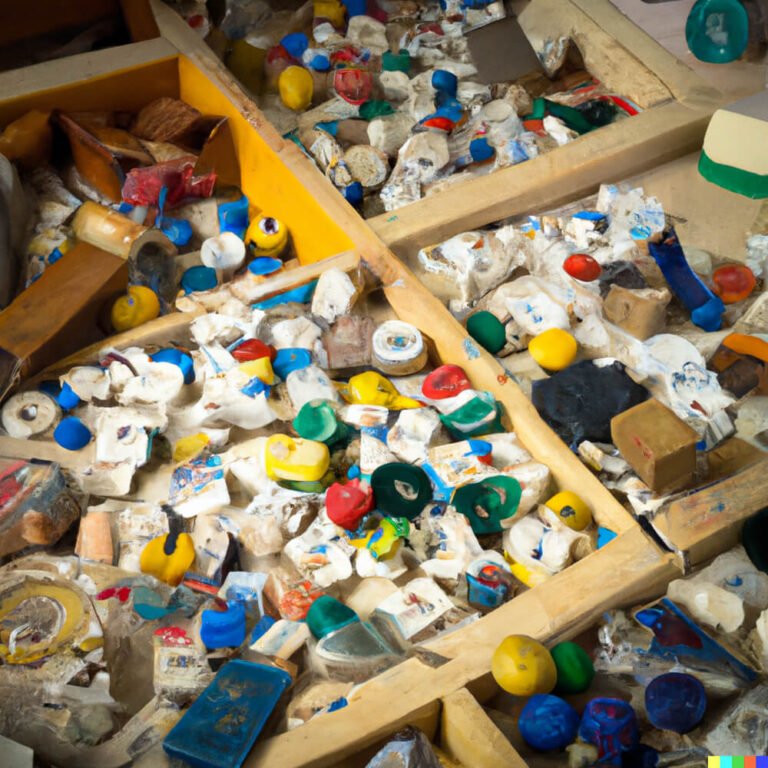Board games have been a source of entertainment and social interaction for centuries, captivating players of all ages. The ongoing debate between classic versus modern board games continues to spark discussions within the gaming community. In this article, we will delve into the world of board games, exploring the rich history, timeless appeal, and evolving landscape of both classic and modern options.
From ancient times to the present day, board games have played a significant role in various cultures around the world. The history of board games is a fascinating journey that has seen the development of classic favorites such as chess, Scrabble, and Monopoly. These timeless classics have stood the test of time and continue to be enjoyed by generations of players.
In contrast, modern board games have witnessed a surge in popularity with the rise of Eurogames and designer board games. These contemporary options offer innovative gameplay mechanics and immersive storytelling, attracting a new generation of enthusiasts. As we explore the differences between classic and modern board games, we will examine their gameplay elements, art and design aesthetics, as well as their impact on social gatherings and gaming subcultures.
History of Board Games
Board games have been a part of human history for thousands of years, with evidence of early forms of board gaming dating back to ancient civilizations such as Mesopotamia and Egypt. These ancient games varied widely in terms of rules and materials used, but they all shared the common purpose of providing entertainment and social interaction. Over time, board games continued to evolve, with different cultures creating their own unique variations.
The medieval period saw the introduction of popular classics like chess and backgammon, which remain beloved classics to this day. These games were often associated with nobility and were played as much for intellectual stimulation as for leisure. As society progressed into the industrial era and beyond, games like Monopoly and Scrabble emerged, reflecting the changing values and interests of the time.
In recent decades, the world has witnessed a renaissance in board gaming, with an explosion of modern titles that emphasize strategic depth and innovative gameplay mechanics. Eurogames, characterized by their focus on strategy and minimal luck factor, have gained a strong following among enthusiasts.
Meanwhile, designer board games have pushed the boundaries of creativity in terms of storytelling, player interaction, and thematic immersion. This resurgence has led to a diverse landscape where classic and modern board gaming coexist, each offering its own distinct appeal to players.
Classic Board Games
Similarly, Scrabble, invented in 1938 by American architect Alfred Butts, has remained a favorite among word game enthusiasts due to its blend of vocabulary skills and strategic tile placement. The game’s popularity has led to numerous international tournaments and a dedicated competitive scene. On the other hand, Monopoly has become a household name since its commercial release in 1935. The game has been localized into many editions worldwide and remains a staple in family game nights.
According to the NPD Group / Retail Tracking Service, as cited by Toy Association, sales of classic board games like Monopoly surged during the COVID-19 pandemic lockdowns as families sought traditional forms of entertainment while staying at home. This resurgence demonstrates the enduring appeal of classic board games across different age groups and demographics.
| Board Game | Estimated Year of Origin |
|---|---|
| Chess | Around 6th Century AD |
| Scrabble | 1938 |
| Monopoly | 1935 |
Modern Board Games
The modern board game industry has seen a significant rise in Eurogames and designer board games in recent years, offering a fresh and innovative take on the traditional concept of board gaming. With unique mechanics, engaging themes, and high-quality components, these games have captured the interest of a new generation of players and have redefined the way we perceive board games.
Eurogames: Strategy and Resource Management
Eurogames, also known as German-style board games, are characterized by their emphasis on strategy, resource management, and minimal luck-based elements. These games often feature economic or city-building themes and prioritize meaningful decision-making over direct conflict between players. Titles such as Catan, Carcassonne, and Ticket to Ride have become synonymous with the Eurogame genre, appealing to both casual and seasoned gamers alike.
Designer Board Games: Innovation and Creativity
In contrast to mass-produced classic board games, designer board games are created by individual designers or small independent studios. This allows for more creative freedom, resulting in innovative gameplay mechanics, immersive storytelling, and unique art styles. Games like Pandemic, Gloomhaven, and Wingspan are prime examples of designer board games that have garnered critical acclaim for their originality and depth.
The Impact on Gaming Culture
The rise of Eurogames and designer board games has had a profound impact on gaming culture, fostering a sense of inclusivity and diversity within the hobby. These modern titles have attracted a more diverse demographic of players who appreciate intellectual challenge and thematic immersion in their gaming experiences.
As a result, gaming communities worldwide have expanded to accommodate this growing interest in modern board gaming, with dedicated conventions, meet-ups, and online forums contributing to the vibrant culture surrounding these games.
As modern board games continue to push boundaries and captivate audiences with their innovation and creativity, it is clear that they have secured their place alongside classic titles in the landscape of tabletop gaming. With an ever-expanding market fueled by passionate designers and enthusiastic players, the future looks bright for modern board games as they shape the evolution of this timeless pastime.
Gameplay and Mechanics
When it comes to gameplay and mechanics, classic board games and modern board games often showcase distinct differences that appeal to different types of players. Classic board games, such as chess, Scrabble, and Monopoly, are known for their straightforward rules and strategic gameplay. These games often rely on traditional game mechanics such as player elimination, dice rolling, or tile placement, offering a competitive and skill-based experience.
In contrast, modern board games have introduced innovative gameplay elements that focus on collaborative play, resource management, and strategic decision-making. Eurogames, also known as German-style board games, have become increasingly popular for their emphasis on non-confrontational gameplay, where players work towards common goals instead of directly competing against each other. Additionally, designer board games often incorporate unique mechanics like worker placement, engine building, and asymmetric player powers to create engaging and dynamic experiences.
The differences in gameplay and mechanics between classic and modern board games cater to diverse preferences among players. While some enjoy the traditional approach of classic games with simple rules and direct competition, others are drawn to the depth and complexity offered by the strategic mechanics found in modern board games. Ultimately, both styles offer unique gaming experiences that contribute to the rich diversity within the world of board gaming.
Art and Design
Board games have come a long way in terms of visuals and aesthetics. In the past, classic board games like Chess and Scrabble featured simplistic designs with basic boards and simple pieces. However, in the modern era, board game design has evolved dramatically. Modern board games now boast intricate artwork, detailed miniatures, and high-quality components that enhance the overall gaming experience.
One of the most notable changes in board game visuals is the shift towards thematic artwork and immersive designs. Modern board games often feature stunning illustrations that bring the game’s theme to life. Whether it’s exploring a vibrant fantasy world or navigating a dystopian future, players can immerse themselves in visually captivating settings that enhance their gaming experience.
Furthermore, advancements in technology have allowed for innovative design elements such as 3D elements, holographic effects, and interactive components in modern board games. These visual enhancements not only make the games more appealing but also add an interactive dimension that engages players on a whole new level.
| Board Game | Aesthetic Evolution |
|---|---|
| Chess | Simplistic designs with basic boards and simple pieces |
| Terraforming Mars | Stunning illustrations that bring the game’s theme to life |
| Gloomhaven | Innovative design elements such as detailed miniatures and interactive components |
Community and Culture
Tradition and Togetherness
Classic board games have long been a staple of social gatherings, bringing friends and family members together for hours of fun and friendly competition. Whether it’s the strategic gameplay of chess or the wordplay in Scrabble, these timeless games provide a sense of tradition and togetherness. Players of all ages can participate, making classic board games a versatile form of entertainment that fosters interpersonal connections.
In contrast, modern board games have also made a significant impact on social gatherings by offering a wider variety of themes and mechanics. Eurogames, in particular, emphasize strategy, resource management, and player interaction, creating engaging experiences that bring people together. From cooperative adventures to competitive showdowns, modern board games cater to diverse interests and preferences within gaming communities.
Gaming Subcultures and Events
Classic board game enthusiasts often come together at local game shops or community centers to engage in tournaments or casual play sessions. These events can be opportunities for players to connect with like-minded individuals who share their love for traditional board games. Additionally, dedicated clubs and societies are formed around specific classic board games like Chess Clubs or Scrabble Associations, providing a sense of belonging for passionate players.
On the other hand, modern board game enthusiasts frequently attend specialized gaming conventions such as GenCon or Essen Spiel to discover the latest releases from designers and publishers. These events serve as hubs for gaming subcultures where participants can engage in demos, tournaments, and discussions about their favorite titles. The vibrant atmosphere at these conventions highlights the thriving community surrounding modern board games.
Adapting to Digital Platforms
With the advancement of technology, both classic and modern board games have found new avenues for social interaction through digital platforms. Online gaming communities allow players to connect with others from around the world, regardless of their physical location. Virtual tabletop simulators provide an opportunity for fans of classic board games to continue enjoying their favorite titles remotely.
Similarly, modern board game enthusiasts embrace digital adaptations that offer convenient ways to play with friends across various digital devices. Whether it’s through official apps or online multiplayer platforms, these adaptations enable players to stay connected while exploring the intricacies of modern board game designs. The integration of digital platforms has expanded the reach of both classic and modern board games within global gaming cultures.
The Future of Board Games
The board gaming industry has seen a surge in popularity in recent years, with both classic and modern board games attracting a larger and more diverse audience. As we look to the future of board games, it’s essential to consider how the industry will continue to evolve and what trends we can expect to see in the coming years.
One significant trend that is likely to shape the future of board gaming is the influence of technology. With the advancement of virtual reality and augmented reality technology, we can anticipate seeing more immersive and interactive board game experiences. This may include incorporating digital elements into traditional board games or creating entirely new forms of gameplay that blend physical and digital components.
Another aspect to consider when predicting the future of board games is the continued growth of niche and specialized gaming communities. As modern board games have become more complex and varied, there has been a proliferation of unique themes and mechanics that cater to specific interests. This trend is expected to continue, with game designers creating more tailored experiences for different types of players, from hardcore strategy enthusiasts to casual family gamers.
Furthermore, as board gaming becomes more mainstream, we can expect to see an increase in diversity and representation within the industry. There has been a growing awareness of the need for inclusivity and diverse perspectives in all forms of entertainment, including board games.
This means that game designers will likely prioritize creating games that appeal to a broader range of players, featuring diverse characters, settings, and storytelling that reflect the world we live in today. Ultimately, the future of board games looks bright, with exciting technological advancements, a focus on niche interests, and a commitment to diversity shaping the industry for years to come.
Conclusion
In conclusion, the world of board games continues to thrive, with both classic and modern options finding their place in the hearts of gamers. The history of board games has shown a remarkable evolution, from ancient times to the present day, reflecting changing societal values and advancements in game design.
Classic board games like chess, Scrabble, and Monopoly have stood the test of time, captivating generations with their timeless appeal and strategic depth. On the other hand, modern board games have witnessed a surge in popularity, with Eurogames and designer board games offering innovative mechanics and engaging experiences.
Despite their differences in gameplay mechanics and visual aesthetics, both classic and modern board games share a common goal – bringing people together for social gatherings and fostering gaming subcultures. Whether it’s around a chessboard or a tabletop filled with miniatures, the sense of community and camaraderie that board games provide is undeniable.
As we look to the future of board gaming, it’s clear that both classic and modern options will continue to coexist, catering to diverse tastes and preferences within the gaming community.
Ultimately, the debate between classic and modern board games is an ongoing one that reflects the rich tapestry of options available to enthusiasts. With an ever-expanding array of choices and an enduring love for tabletop gaming, it’s safe to say that the world of board games is as vibrant as ever.
Whether you find yourself drawn to the traditions of classic games or enticed by the innovation of modern titles, there’s no denying that board games hold a special place in our shared cultural heritage.
Frequently Asked Questions
What Is the Difference Between Old Games and Modern Games?
The main difference between old games and modern games lies in the technology and design. Old games often relied on simple graphics, limited gameplay, and a lack of storytelling.
Modern games, on the other hand, feature advanced graphics, complex gameplay mechanics, and immersive storytelling. Furthermore, old games were mostly single-player or local multiplayer, while modern games often emphasize online multiplayer capabilities and social interaction.
What Is a Classical Board Game?
A classical board game refers to traditional games that have been played for generations. These games are often based on strategy, luck, or a combination of both. Examples of classical board games include Chess, Checkers, Backgammon, and Go. These timeless games have remained popular due to their simplicity yet challenging nature, making them enjoyable for players of all ages.
What Is a Modern Board Game?
A modern board game is a game that has been developed more recently and often incorporates new game mechanics or themes that differ from classical board games. These modern board games can range from cooperative strategy games like Pandemic to resource management and worker placement games like Catan.
Additionally, modern board games have seen a renaissance in recent years with a focus on unique artwork, innovative gameplay elements, and engaging storytelling to appeal to a wider audience beyond traditional gamers.

I love playing all kinds of games – from classics like Monopoly to modern favourites like Ticket to Ride.
I created this blog as a way to share my love of board games with others, and provide information on the latest releases and news in the industry.





